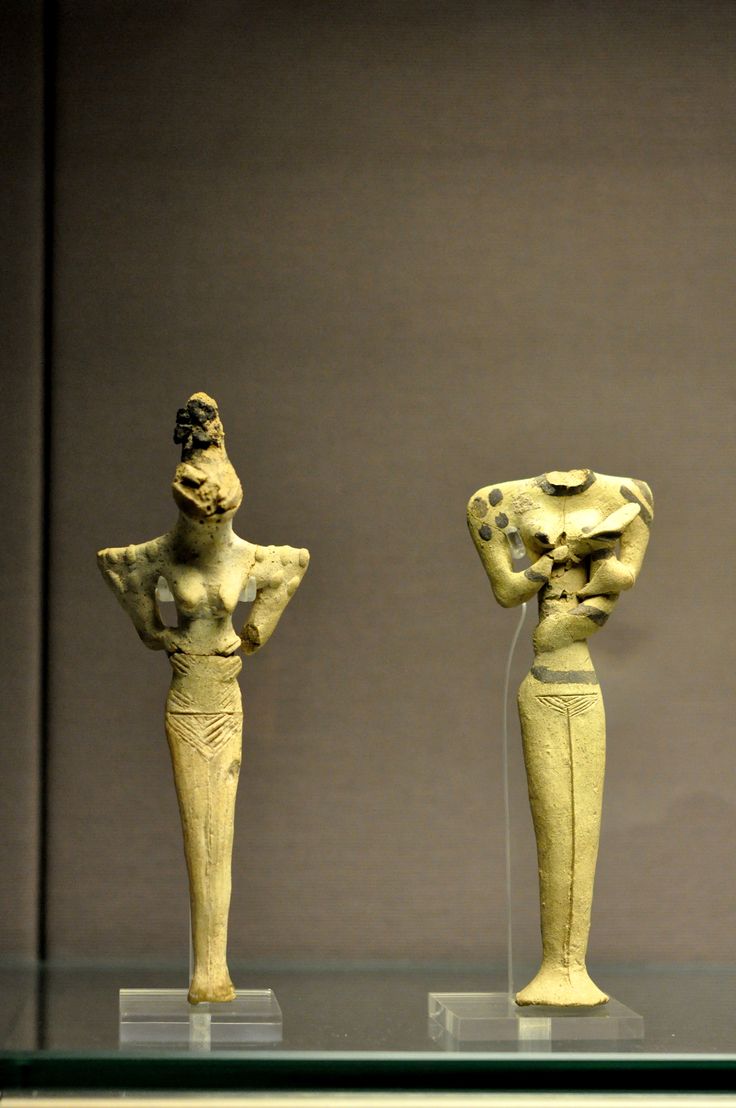Uncovering the Mysterious Ubaid Anthropomorphic Figures
The ancient world is a tapestry woven with countless mysteries, each thread a tantalizing clue to the past. One such enigma lies in the Ubaid culture, a prehistoric society that flourished in Mesopotamia between 4000 and 5500 BC. Amidst the ruins of their settlements, archaeologists have unearthed a remarkable discovery: anthropomorphic figurines with distinct lizard-like features, giving rise to the intriguing moniker “Ubaid Lizardmen.”

The main site where these unusual Ubaid anthropomorphic figures were discovered is the archaeological mound of Tell Al’Ubaid, although similar figurines have also been found in the ancient sites of Ur and Eridu. The Al’Ubaid site, spanning approximately half a kilometer in diameter and standing two meters above the ground, was first excavated by Harry Reginald Hal in 1919.
The Ubaid figurines, both male and female, are characterized by their distinctive features: long heads, almond-shaped eyes, tapered faces, and a lizard-like nose. These stylized heads have earned them the moniker “lizard figurines.” Interestingly, the figures appear to be naked, with markings on their bodies that may represent tattoos, ritual scarification, or a combination of the two. Sexual dimorphism, or the visible differences between the sexes, is less evident in these Ubaid figurines, as they tend to emphasize the shared forms of body ornamentation and cranial deformation.
Intriguing Artifacts: Staffs, Scepters, and Nursing Mothers
Among the Ubaid figurines, some hold a staff or scepter, possibly symbolizing justice and ruling, while others depict female figures nursing their lizard-like offspring. These nursing mothers, with their children also represented as lizard-type creatures, offer a glimpse into the cultural and social dynamics of the Ubaid people.

The presence of these intriguing artifacts, such as the staffs, scepters, and nursing mother figurines, suggests that the Ubaid Lizardmen may have held significant social or religious roles within their society. The staff or scepter, for instance, could have been a symbol of authority or leadership, while the nursing mother figurines may have represented important cultural beliefs or practices related to motherhood and the connection between humans and the natural world.
The Origins and Significance of the Ubaid Lizardmen
The origins of the Ubaid people and the significance of their lizard-like figurines remain shrouded in mystery. Some scholars speculate that the lizard features may have held symbolic or religious meaning, perhaps representing a revered deity or a connection to the natural world. Others suggest that the cranial deformations and body markings could have been intentional modifications, reflecting cultural practices or social hierarchies.
One intriguing theory is that the Ubaid Lizardmen may have been influenced by or connected to other ancient cultures that revered reptilian or serpentine deities. The Mesopotamian region was home to a rich tapestry of mythological and religious beliefs, and the Ubaid Lizardmen could have been a manifestation of this complex spiritual landscape.
Uncovering the Enigma: Ongoing Research and Interpretations

As researchers continue to study the Ubaid Lizardmen and the broader Ubaid culture, new theories and interpretations emerge, shedding light on this enigmatic ancient civilization. The figurines, with their captivating combination of human and reptilian features, serve as a tantalizing gateway into the beliefs, customs, and societal structures of a people who inhabited Mesopotamia thousands of years ago.
One area of ongoing research is the potential connection between the Ubaid Lizardmen and the later development of Mesopotamian mythological creatures, such as the half-human, half-reptilian figures depicted in Sumerian and Babylonian art and literature. These intriguing links suggest that the Ubaid Lizardmen may have been a precursor to the mythological beings that would come to shape the cultural and religious landscape of the ancient Near East.
Conclusion
The Ubaid Lizardmen stand as a testament to the enduring mysteries of the ancient world. These enigmatic figurines, with their lizard-like attributes and intriguing artifacts, invite us to ponder the beliefs, practices, and social dynamics of a civilization that thrived long before the rise of the great empires. As we continue to unravel the secrets of the Ubaid culture, we are reminded of the profound power of the past to shape our understanding of the human experience, both ancient and modern.
The Ubaid Lizardmen, with their captivating blend of human and reptilian features, serve as a bridge between the distant past and our present-day fascination with the mysteries of ancient civilizations. Through the study of these remarkable artifacts, we gain a deeper appreciation for the rich tapestry of human history and the enduring curiosity that drives us to uncover the hidden stories of our ancestors.
